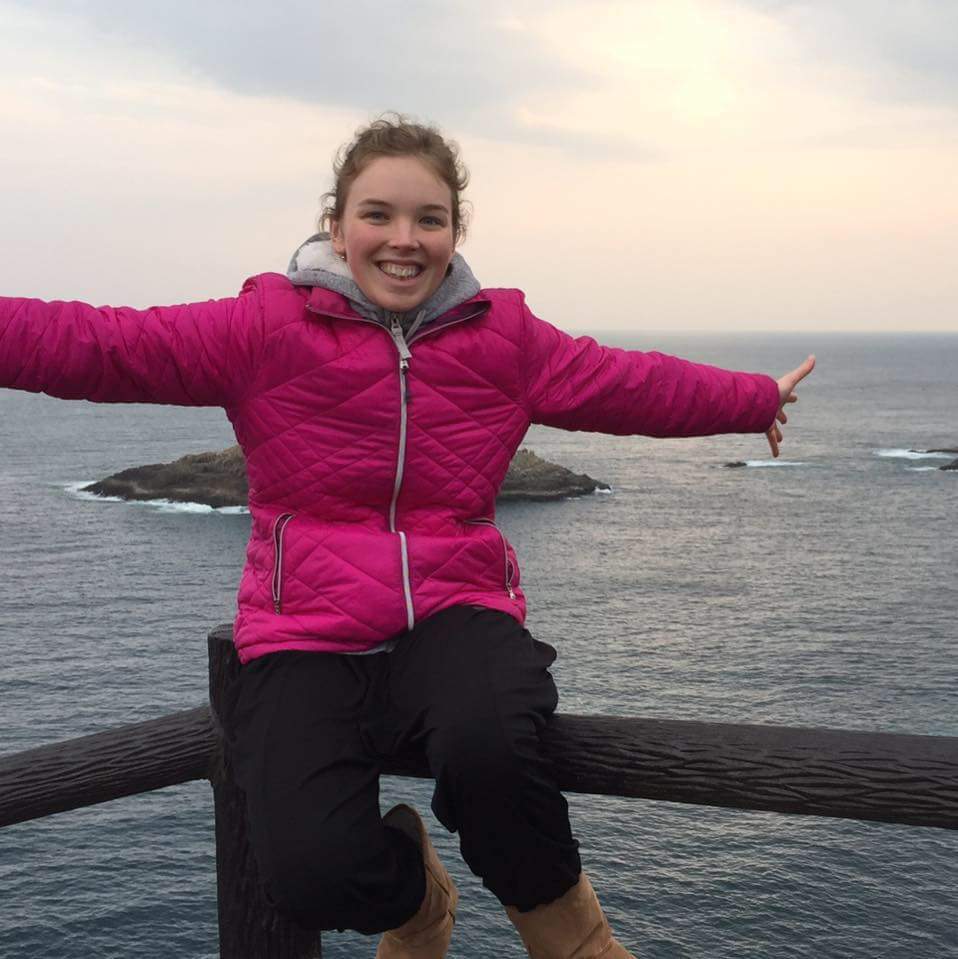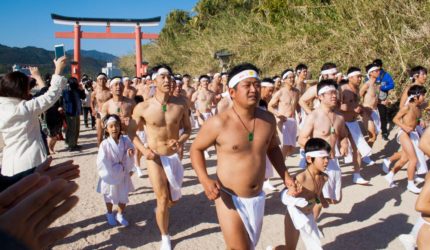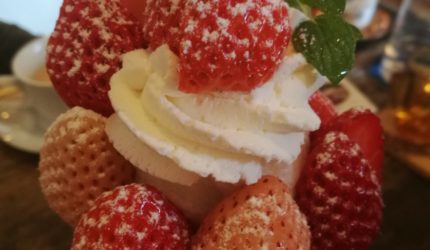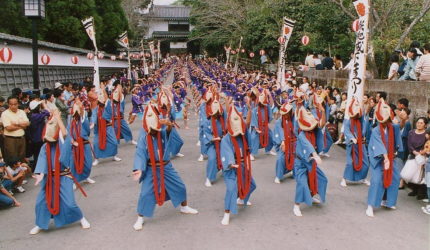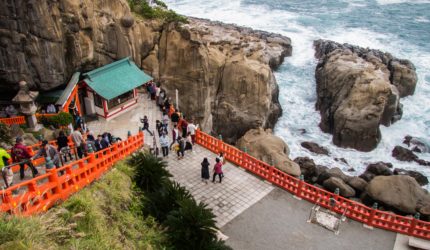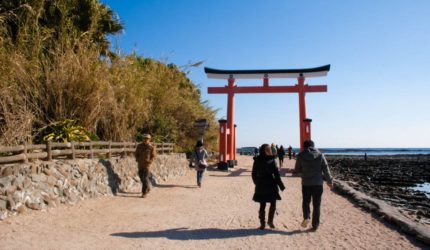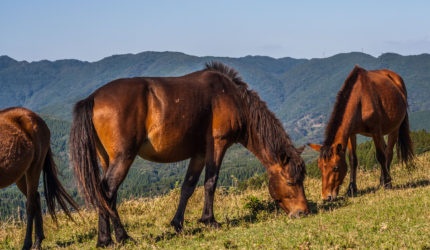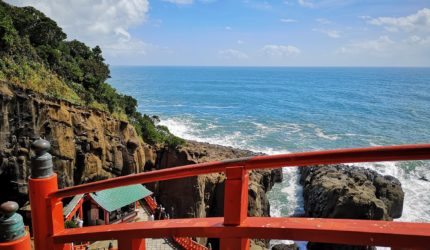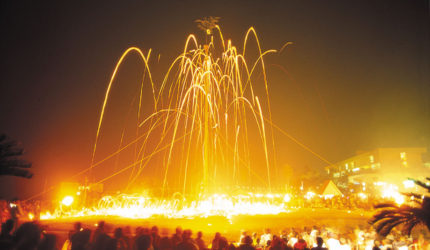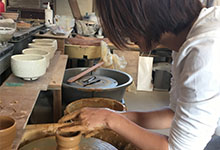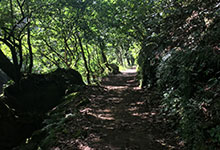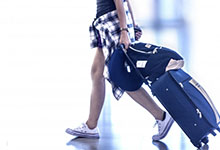For many travelers to Japan, visiting a shrine or temple is a must. With over 80,000 shrines scattered across Japan, there are certainly plenty to choose from. While prefectures such as Tokyo and Kyoto boast some of the most widely known shrines and temples, Miyazaki also has a lot to offer. For day 3 of our trip, I wanted to take my colleagues to see my favorite shrine in Japan, Udo Shrine.
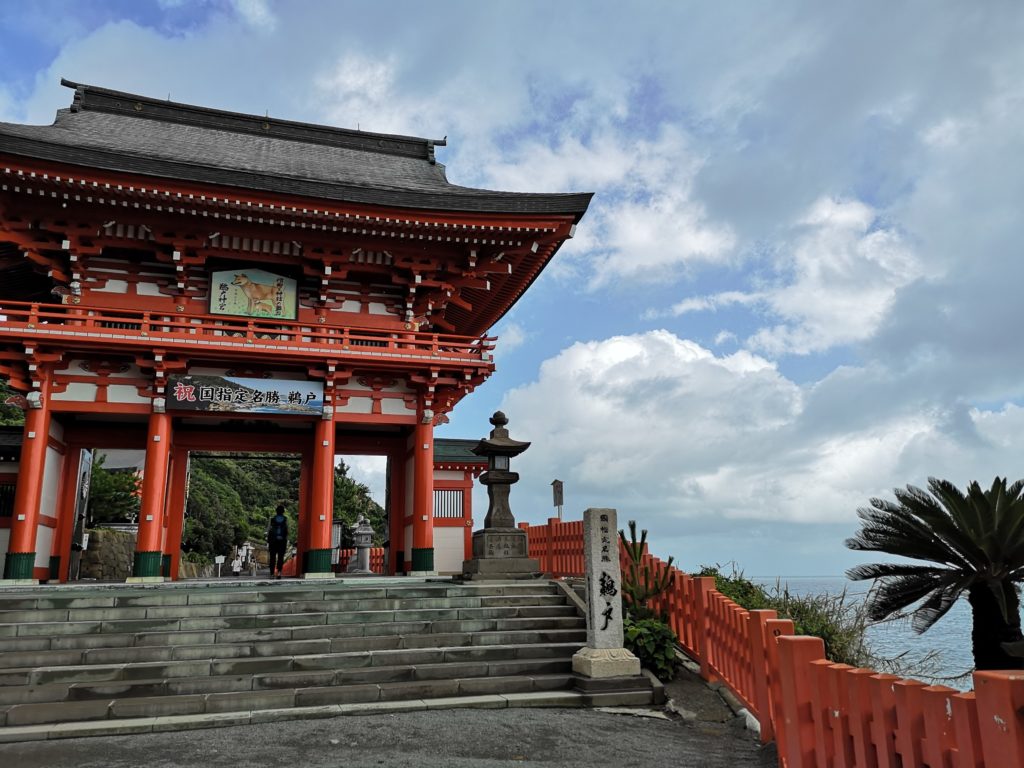
We set out for Udo Shrine at 9 am. It was only a short 30-minute drive along the coastline from Aoshima. To be honest, I would recommend this journey even if only for the drive. It reminds me of the Great Ocean road drive in Australia, with stunning views of the ocean and many small beach inlets along the way where you can stop and enjoy a stroll or even a swim or surf.
Udo Shrine also offers stunning views of the ocean. The shrine itself is located in a cave. From the parking lot, you walk along a cliff, then down a flight of stairs that will lead you to the entrance of the cave. The contrast of the bright red of the shrine, and the deep blue of the ocean is strikingly beautiful.
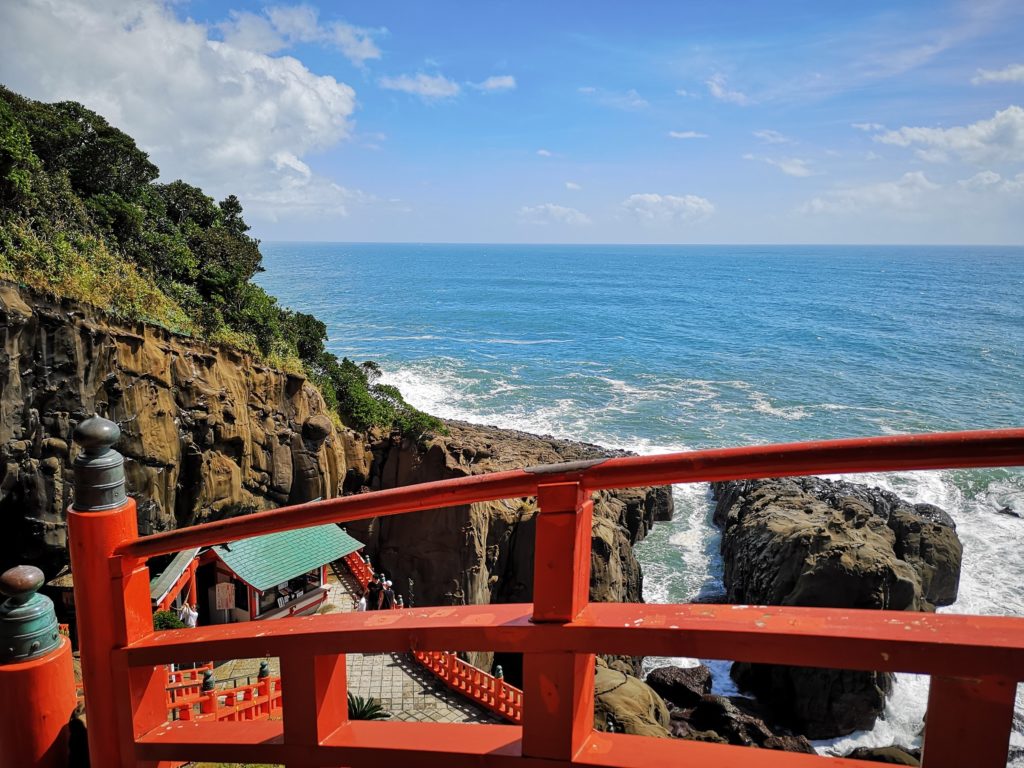
Some shrines in Japan are said to have a specific purpose for visiting. For example, Aoshima shrine is known as a place for lovers to visit to strengthen their relationship. On the other hand, Ikime shrine, another shrine in Miyazaki is said to be for people who have poor eyesight or ailments relating to the eyes. Of course, you can make general prayers at any shrine, but it is interesting to know what a shrine is famous for. Udo shrine is famous for pregnancy and healthy childbirth. If you walk around the shrine to the back of the cave you will find small arrows pointing to two parts of the roof that drip water. If you touch the rocks, it is said that you will have a healthy child. We debated whether we should touch them or not, not being pregnant at the time, but we decided to touch them just in case we decide to have children in the future. It’s good to be prepared!

We continued around the back of the shrine which led us back to the entrance of the cave. Outside of the cave, there is a place where you can try your luck throwing small stones at turtle rock. If you get a stone into the rope circle, it is said that you will have good luck. The cost is 100 yen for five stones. Women should throw with their right hand and men with their left. Three of us managed to bounce a stone inside the rock, but no-one managed to get one to stay inside the circle. Still, I felt pretty lucky being able to visit this beautiful place once again.
The next stop on our journey was Sun Messe. Many visitors to Miyazaki are surprised to learn that there are Moai statues on the Nichinan coastline. I know my first question when I saw them was, umm… why?
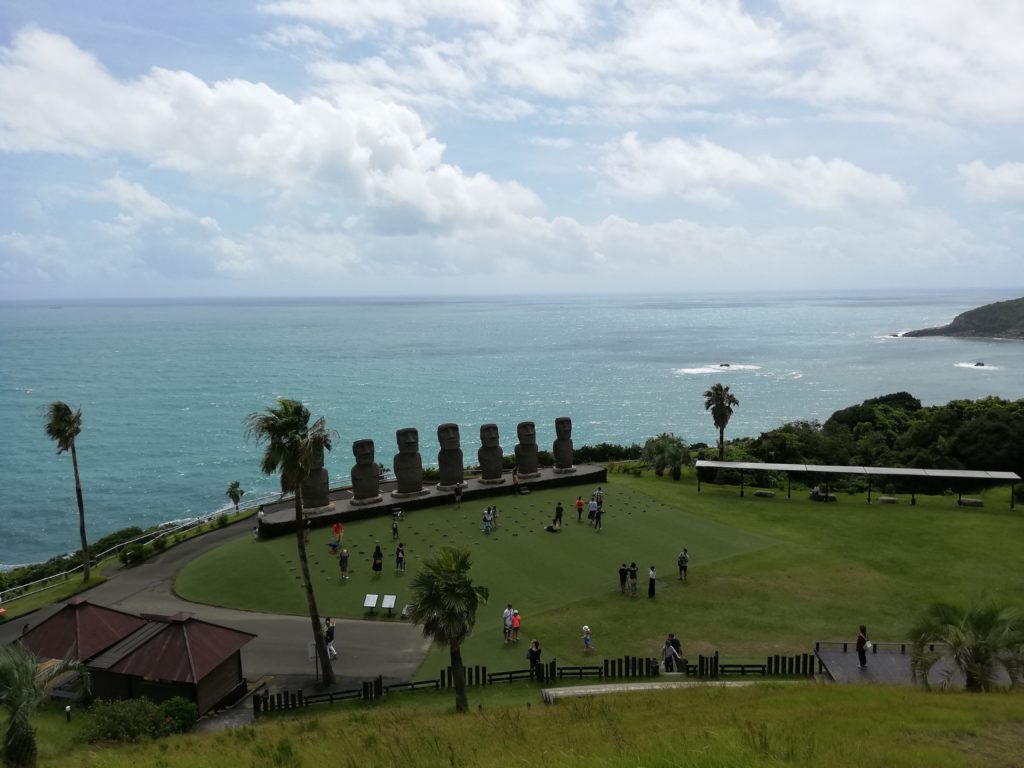
The seven Moai statues at Sun Messe are an exact replica (same size, shape, and facing the same direction) of the Ahu Akivi statues on Easter Island. You can find other Moai statues in various locations around Japan, however, these seven are a little special. They were made after receiving special permission from Easter Island, a worldwide first.
But that doesn’t really answer the question, what is the connection between Japan and Easter Island? According to the Sun Messe website, in 1988, a television program in Japan broadcast the plight of the Moai statues which were damaged by war and an earthquake. Japanese crane company Tadano, the Nara National Research Institute for Cultural Prosperity, and stonemason Mr. Katsuji Sano put their hands up for the mission. With their cranes and know-how, the damaged statues on Easter Island were able to be restored to their former glory, connecting Japan to the history of the Moai from that day forward.
As you look down onto the statues with the Pacific ocean in the background stretching out as far as the eye can see, It is not hard to understand why Nichinan was chosen as a fitting location for the seven Moai replica. My colleagues and I tried to mimic the Moai and take a picture together, while enjoying the beautiful sunshine and scenery.
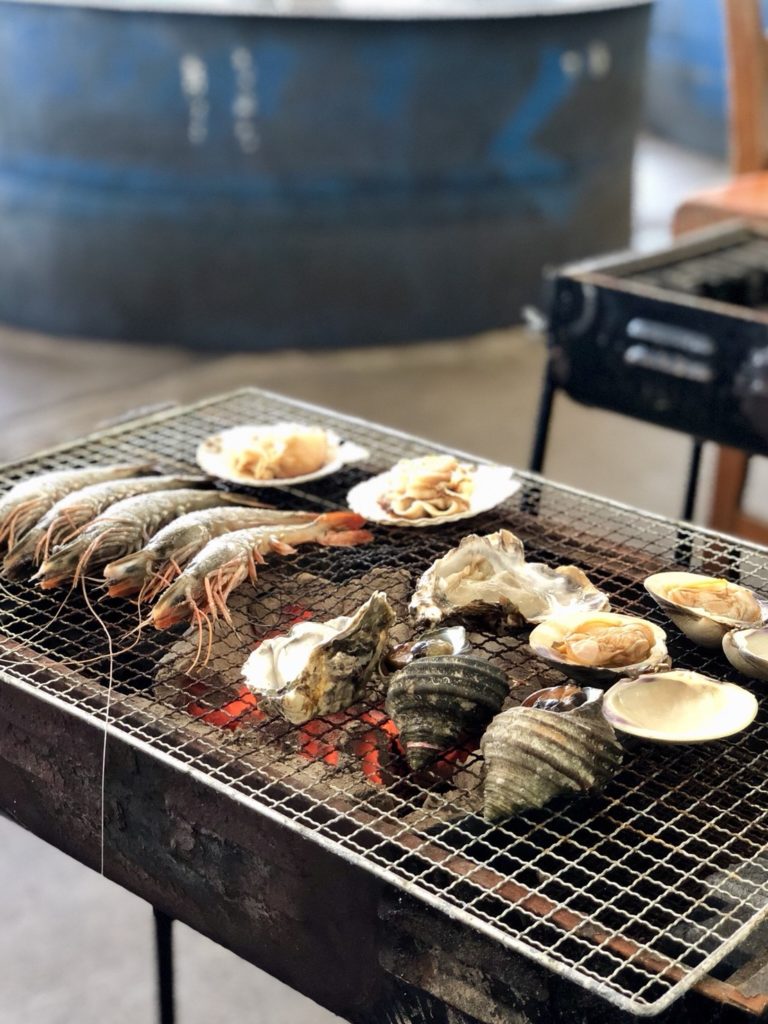
After Sun Messe, we drove back towards Aoshima stopping along the way for lunch at a restaurant called Nichinan Suisan. Since the morning’s activities had all been by the ocean, a seafood lunch seemed like an excellent choice. I highly recommend Nichinan Suisan for fresh seafood and the novelty of cooking it yourself. Each table has a small barbeque to the side which you can use. We ordered sashimi plus a variety of shellfish and tiger prawns to cook on the barbeque. Everything was so fresh and tasty!
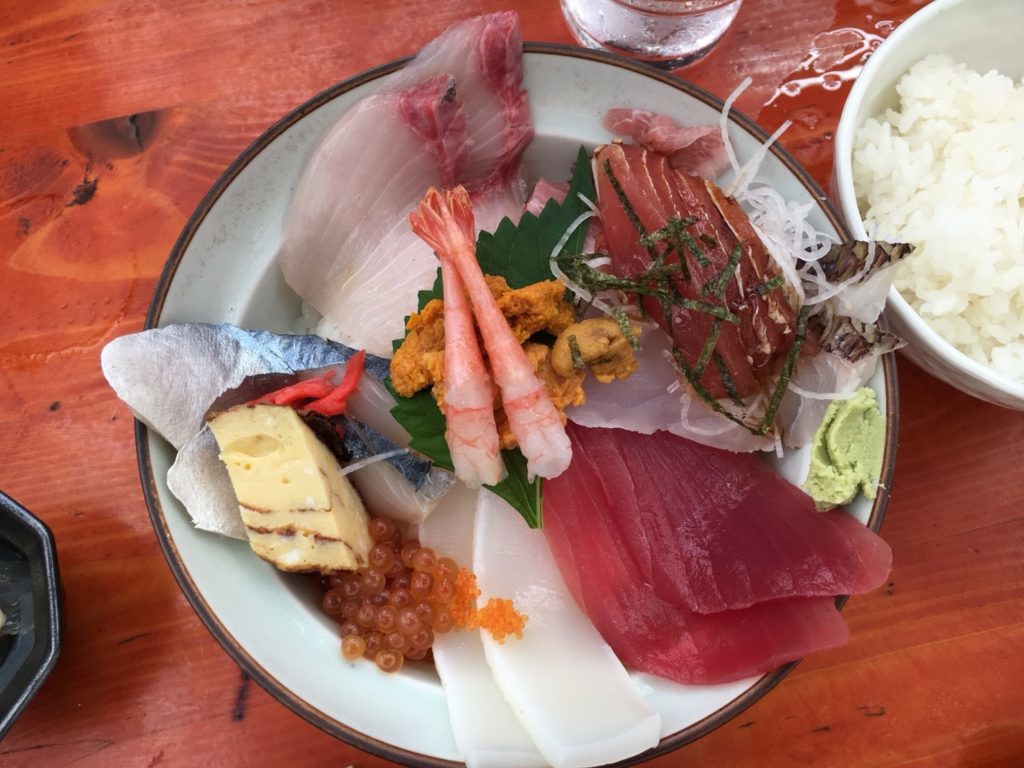
Michinan Suisan(MAP CODE: 274 866 067*22) https://goo.gl/maps/ZHjT9cXs4BK2
With our bellies full, we made our way back to Aoshima to enjoy an afternoon swim. In between dips in the ocean, we got mango soft serve ice cream, another Miyazaki specialty. Miyazaki has so many specialty products, it is really hard to fit them all into just one trip. A whole mango is quite expensive, but mango flavored snacks and sweets are plentiful and delicious. With only one day to go, we were running out of time to eat and see everything. At least now we could cross mango off of the list.
When I asked my colleagues what their favorite part of our Miyazaki trip was, they were unanimous in their response. They loved Udo Shrine. My colleagues have all lived in Japan for an extensive period of time (one is even Japanese), are well traveled, and have definitely seen their fair share of shrines, and yet they said they were really impressed by Udo Shrine. So there you have it, it is not just my opinion; Udo Shrine really is one of the best shrines to visit not only in Miyazaki, but also in Japan.


